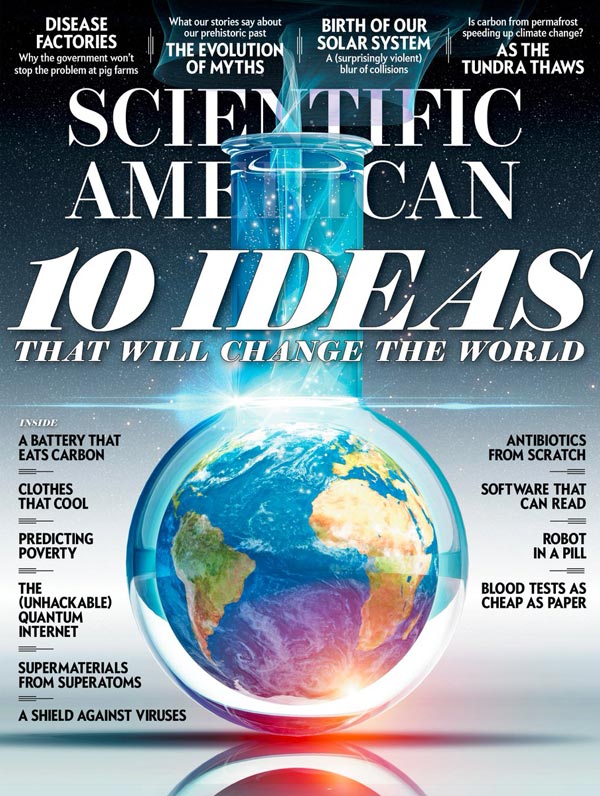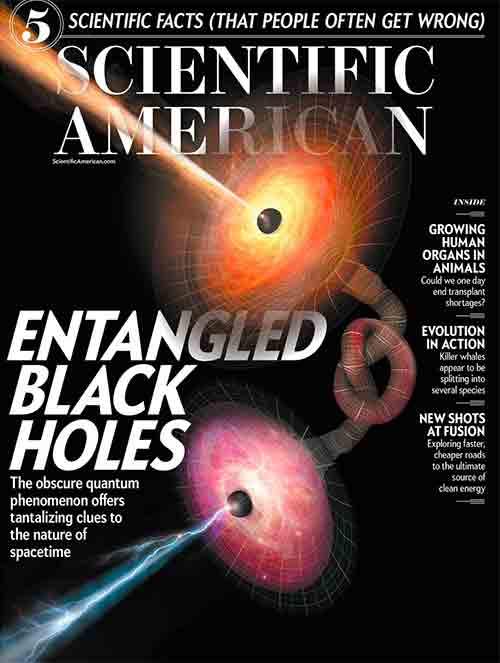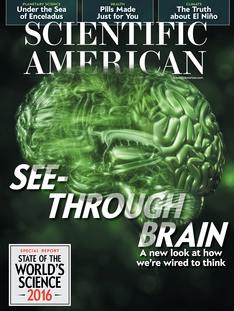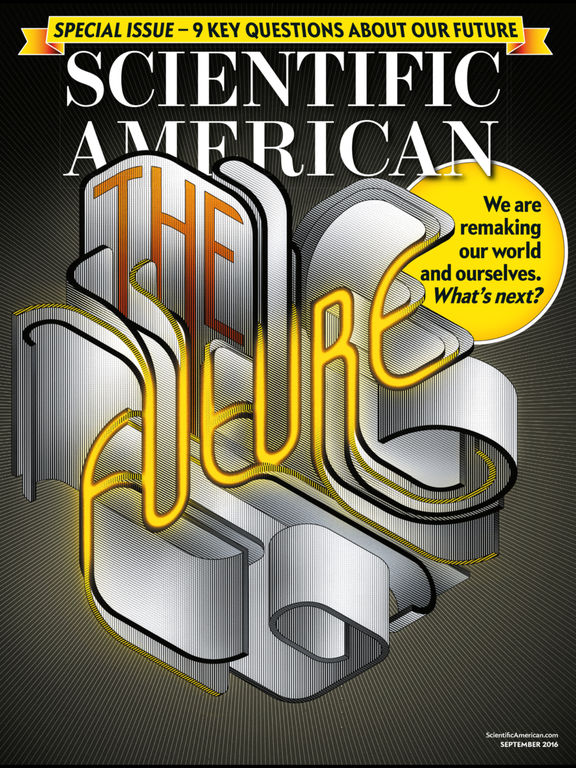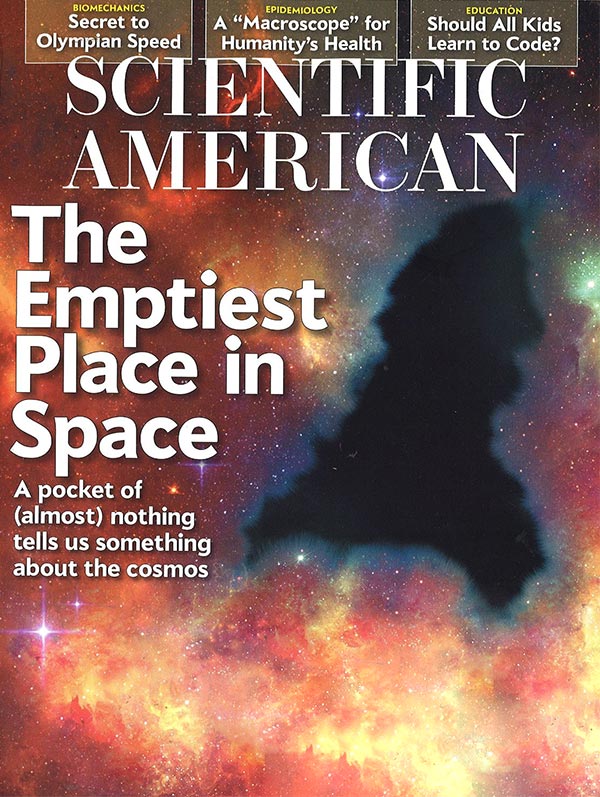December 1, 2016
A new battle over sexual orientation
When did you choose to become straight?
Say what?
By demographic distribution (about 95 percent of the population identifies as heterosexual), the majority of you reading this column are straight. You no more chose this sexual orientation than gays or lesbians choose theirs. Yet a new study published in the fall issue of the nonpeer-reviewed journal The New Atlantis by Johns Hopkins University’s Lawrence S. Mayer and Paul R. McHugh on “Sexuality and Gender” claims that “our scientific knowledge in this area remains unsettled,” that there is no “scientific evidence for the view that sexual orientation is a fixed and innate biological property,” and that no one is “born that way.” This sounds so 1990s, the last time the gender wars heated up. What’s going on here?
One clue comes from the journal’s co-publisher, the Ethics and Public Policy Center (EPPC), “dedicated to applying the Judeo-Christian moral tradition to critical issues of public policy.” Already we’re off the science page. EPPC scholars, its Web page continues, “have consistently sought to defend and promote our nation’s founding principles—respect for the inherent dignity of the human person, individual freedom and responsibility, justice, the rule of law, and limited government.”
Shouldn’t such principles apply to everyone regardless of whether or not their sexual orientation is biologically determined? Of course, and in most Western countries today they do. But in Judeo-Christian America, the argument goes like this: The Bible says that homosexuality is a sin (Leviticus 20:13). If sexual orientation has a strong biological component, then gays and lesbians can hardly be held morally culpable for their sinful ways. But if it’s a choice, then they can be rehabilitated (through “conversion therapy”) and forgiven (“love the sinner, hate the sin” goes the popular trope). Evangelist Jimmy Swaggart articulated the logic this way: “While it is true that the seed of original sin carries with it every type of deviation, aberration, perversion, and wrongdoing, the homosexual cannot claim to have been born that way any more than the drunkard, gambler, killer, etc.” (continue reading…)
November 1, 2016
The psychology of political pessimism
“If you had to choose a moment in time to be born, any time in human history, and you didn’t know ahead of time what nationality you were or what gender or what your economic status might be,” what time would you choose? Paleolithic? Neolithic? Ancient Greece or Rome? Medieval times? Elizabethan England? Colonial America? The 1950s? “You’d choose today,” answered the man who posed this question in an April 2016 speech, President Barack Obama. “We are fortunate to be living in the most peaceful, most prosperous, most progressive era in human history,” he opined, adding “that it’s been decades since the last war between major powers. More people live in democracies. We’re wealthier and healthier and better educated, with a global economy that has lifted up more than a billion people from extreme poverty.”
If these facts are true—and they are (see, for example, economist Max Roser’s ourworldindata.org and the data at human progress.org aggregated from the World Bank, the United Nations, the Organization for Economic Co‑operation and Development, and Eurostat)—then why the doom and gloom heaped on us by politicians and pundits on both sides of the political aisle? First, news media outlets are far more likely to report bad news than good, simply because that is what they have been tasked to do. Another day in Turkey without a coup goes unreported, but just try and take over a country without the world’s media covering it. Second, as psychologist Roy F. Baumeister explained it in the title of a now classic 2001 paper he co-authored in the journal Review of General Psychology, “Bad Is Stronger Than Good.” Reviewing a wide range of evidence across many domains of life, the authors found that “bad emotions, bad parents, and bad feedback have more impact than good ones, and bad information is processed more thoroughly than good. Bad impressions and bad stereotypes are quicker to form and more resistant to disconfirmation than good ones.” Why? (continue reading…)
October 1, 2016
Can science and Silicon Valley defeat death?
Toward the end of his life, in an essay entitled “Topic of Cancer” in 2010 in Vanity Fair, Christopher Hitchens answered his own rhetorical query poignantly: “To the dumb question ‘Why me?’ the cosmos barely bothers to return the reply: Why not?”
The cosmos has never been particularly loquacious with its intentions, often requiring Brobdingnagian-sized ventures—from particle accelerators and space telescopes to genome and connectome projects—to tease out its deepest secrets. Can the same be done for death? A number of scientists and Silicon Valley billionaires think it can.
Oracle co-founder Larry Ellison, for example, has given more than $430 million toward antiaging research because he finds the quiet acquiescence of mortality “incomprehensible.” XPRIZE entrepreneur Peter H. Diamandis co-founded Human Longevity, which, in conjunction with StartUp Health, launched the Longevity Moonshot, whose mission is “to extend and enhance healthy life by 50+ years and change the face of aging.” (continue reading…)
September 1, 2016
Is it possible to measure supernatural or paranormal phenomena?
The history of science has beheld the steady replacement of the paranormal and the supernatural with the normal and the natural. Weather events once attributed to the supernatural scheming of deities are now understood to be the product of natural forces of temperature and pressure. Plagues formerly ascribed to women cavorting with the devil are currently known to be caused by bacteria and viruses. Mental illnesses previously imputed to demonic possession are today sought in genes and neurochemistry. Accidents heretofore explained by fate, karma or providence are nowadays accredited to probabilities, statistics and risk.
If we follow this trend to encompass all phenomena, what place is there for such paranormal forces as ESP or supernatural agents like God? Do we know enough to know that they cannot exist? Or is it possible there are unknown forces within our universe or intentional agents outside of it that we have yet to discover? According to California Institute of Technology physicist Sean Carroll in his intensely insightful book The Big Picture (Dutton, 2016), “All of the things you’ve ever seen or experienced in your life—objects, plants, animals, people—are made of a small number of particles, interacting with one another through a small number of forces.” Once you understand the fundamental laws of nature, you can scale up to planets and people and even assess the probability that God, the soul, the afterlife and ESP exist, which Carroll concludes is very low.
The postmodern belief that discarded ideas mean that there is no objective reality and that all theories are equal is more wrong than all the wrong theories combined.
But isn’t the history of science also strewn with the remains of failed theories such as phlogiston, miasma, spontaneous generation and the luminiferous aether? Yes, and that is how we know we are making progress. The postmodern belief that discarded ideas mean that there is no objective reality and that all theories are equal is more wrong than all the wrong theories combined. The reason has to do with the relation of the known to the unknown.
As the sphere of the known expands into the aether of the unknown, the proportion of ignorance seems to grow—the more you know, the more you know how much you don’t know. But note what happens when the radius of a sphere increases: the increase in the surface area is squared while the increase in the volume is cubed. Therefore, as the radius of the sphere of scientific knowledge doubles, the surface area of the unknown increases fourfold, but the volume of the known increases eightfold. It is at this boundary where we can stake a claim of true progress in the history of science.
Take our understanding of particles and forces, which Carroll says “seems indisputably accurate within a very wide domain of applicability,” such that “a thousand or a million years from now, whatever amazing discoveries science will have made, our descendants are not going to be saying ‘Haha, those silly twenty-first-century scientists, believing in ‘neutrons’ and ‘electromagnetism.’” Thus, Carroll concludes that the laws of physics “rule out the possibility of true psychic powers.” Why? Because the particles and forces of nature don’t allow us to bend spoons, levitate or read minds, and “we know that there aren’t new particles or forces out there yet to be discovered that would support them. Not simply because we haven’t found them yet, but because we definitely would have found them if they had the right characteristics to give us the requisite powers.”
What about a supernatural God? Perhaps such an entity exists outside nature and its laws. If so, how would we detect it with our instruments? If a deity used natural forces to, say, cure someone’s cancer by reprogramming the cancerous cells’ DNA, that would make God nothing more than a skilled genetic engineer. If God used unknown supernatural forces, how might they interact with the known natural forces? And if such supernatural forces could somehow stir the particles in our universe, shouldn’t we be able to detect them and thereby incorporate them into our theories about the natural world? Whence the supernatural?
It is at the horizon where the known meets the unknown that we are tempted to inject paranormal and supernatural forces to explain hitherto unsolved mysteries, but we must resist the temptation because such efforts can never succeed, not even in principle.
August 1, 2016
Facilitated communication, autism and patients’ rights
This past April 2, on World Autism Awareness Day, Apple released a heartstrings-tugging commercial depicting an autistic boy typing, in part with the assistance of a facilitator, a message on an iPad that voiced: “So many people can’t understand that I have a mind. All they see is a person who is not in control. But now you can hear me. The iPad helps me to see not only my words, but to hold onto my thoughts.”
The commercial was surprising because this system of “facilitated communication” (FC) was thoroughly discredited in the 1990s. Facilitators had used plastic alphabet keyboards or portable typing devices, and in various videos—for example, the 1993 Frontline episode “Prisoners of Silence”— you see children who are not even looking at the keyboard as facilitators direct their typing or facilitators moving the keyboard under a child’s hand to produce the proper keystrokes. The technique was an academic curiosity until FC-generated messages included graphic descriptions of sexual abuse by families or caretakers of numerous children. Charges and lawsuits were filed, and courts needed scientists to determine who authored the accusations—the children or the facilitators?
Howard Shane, now director of the Autism Language Program at Boston Children’s Hospital, and Doug Wheeler, then at the O. D. Heck Developmental Center in Schenectady, N.Y., conducted independent controlled experiments in which autistic children and their facilitators were shown pictures of either the same or different objects while blinded to what each other saw. What was typed was always and only what the facilitator saw. (continue reading…)
